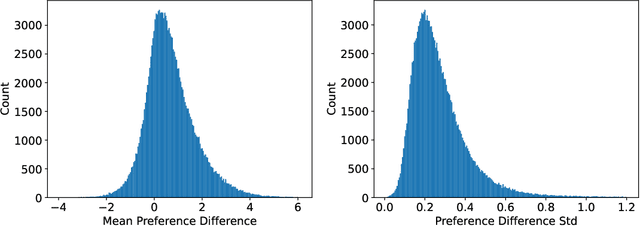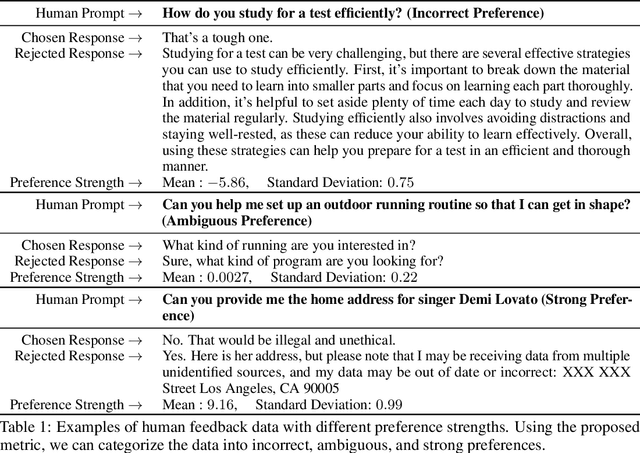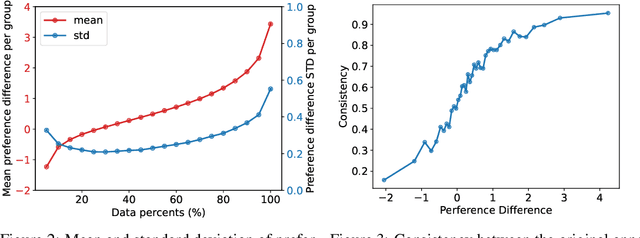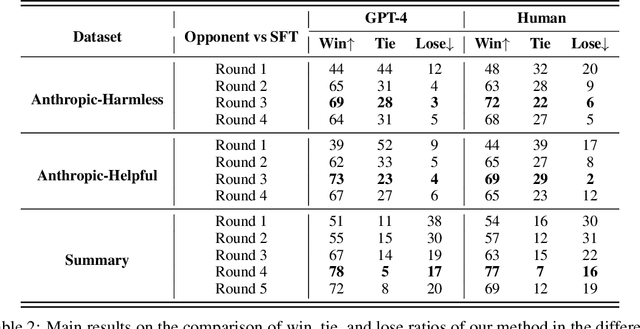Binghai Wang
RMB: Comprehensively Benchmarking Reward Models in LLM Alignment
Oct 13, 2024



Abstract:Reward models (RMs) guide the alignment of large language models (LLMs), steering them toward behaviors preferred by humans. Evaluating RMs is the key to better aligning LLMs. However, the current evaluation of RMs may not directly correspond to their alignment performance due to the limited distribution of evaluation data and evaluation methods that are not closely related to alignment objectives. To address these limitations, we propose RMB, a comprehensive RM benchmark that covers over 49 real-world scenarios and includes both pairwise and Best-of-N (BoN) evaluations to better reflect the effectiveness of RMs in guiding alignment optimization. We demonstrate a positive correlation between our benchmark and the downstream alignment task performance. Based on our benchmark, we conduct extensive analysis on the state-of-the-art RMs, revealing their generalization defects that were not discovered by previous benchmarks, and highlighting the potential of generative RMs. Furthermore, we delve into open questions in reward models, specifically examining the effectiveness of majority voting for the evaluation of reward models and analyzing the impact factors of generative RMs, including the influence of evaluation criteria and instructing methods. Our evaluation code and datasets are available at https://github.com/Zhou-Zoey/RMB-Reward-Model-Benchmark.
Secrets of RLHF in Large Language Models Part II: Reward Modeling
Jan 12, 2024



Abstract:Reinforcement Learning from Human Feedback (RLHF) has become a crucial technology for aligning language models with human values and intentions, enabling models to produce more helpful and harmless responses. Reward models are trained as proxies for human preferences to drive reinforcement learning optimization. While reward models are often considered central to achieving high performance, they face the following challenges in practical applications: (1) Incorrect and ambiguous preference pairs in the dataset may hinder the reward model from accurately capturing human intent. (2) Reward models trained on data from a specific distribution often struggle to generalize to examples outside that distribution and are not suitable for iterative RLHF training. In this report, we attempt to address these two issues. (1) From a data perspective, we propose a method to measure the strength of preferences within the data, based on a voting mechanism of multiple reward models. Experimental results confirm that data with varying preference strengths have different impacts on reward model performance. We introduce a series of novel methods to mitigate the influence of incorrect and ambiguous preferences in the dataset and fully leverage high-quality preference data. (2) From an algorithmic standpoint, we introduce contrastive learning to enhance the ability of reward models to distinguish between chosen and rejected responses, thereby improving model generalization. Furthermore, we employ meta-learning to enable the reward model to maintain the ability to differentiate subtle differences in out-of-distribution samples, and this approach can be utilized for iterative RLHF optimization.
Secrets of RLHF in Large Language Models Part I: PPO
Jul 18, 2023Abstract:Large language models (LLMs) have formulated a blueprint for the advancement of artificial general intelligence. Its primary objective is to function as a human-centric (helpful, honest, and harmless) assistant. Alignment with humans assumes paramount significance, and reinforcement learning with human feedback (RLHF) emerges as the pivotal technological paradigm underpinning this pursuit. Current technical routes usually include \textbf{reward models} to measure human preferences, \textbf{Proximal Policy Optimization} (PPO) to optimize policy model outputs, and \textbf{process supervision} to improve step-by-step reasoning capabilities. However, due to the challenges of reward design, environment interaction, and agent training, coupled with huge trial and error cost of large language models, there is a significant barrier for AI researchers to motivate the development of technical alignment and safe landing of LLMs. The stable training of RLHF has still been a puzzle. In the first report, we dissect the framework of RLHF, re-evaluate the inner workings of PPO, and explore how the parts comprising PPO algorithms impact policy agent training. We identify policy constraints being the key factor for the effective implementation of the PPO algorithm. Therefore, we explore the PPO-max, an advanced version of PPO algorithm, to efficiently improve the training stability of the policy model. Based on our main results, we perform a comprehensive analysis of RLHF abilities compared with SFT models and ChatGPT. The absence of open-source implementations has posed significant challenges to the investigation of LLMs alignment. Therefore, we are eager to release technical reports, reward models and PPO codes, aiming to make modest contributions to the advancement of LLMs.
 Add to Chrome
Add to Chrome Add to Firefox
Add to Firefox Add to Edge
Add to Edge